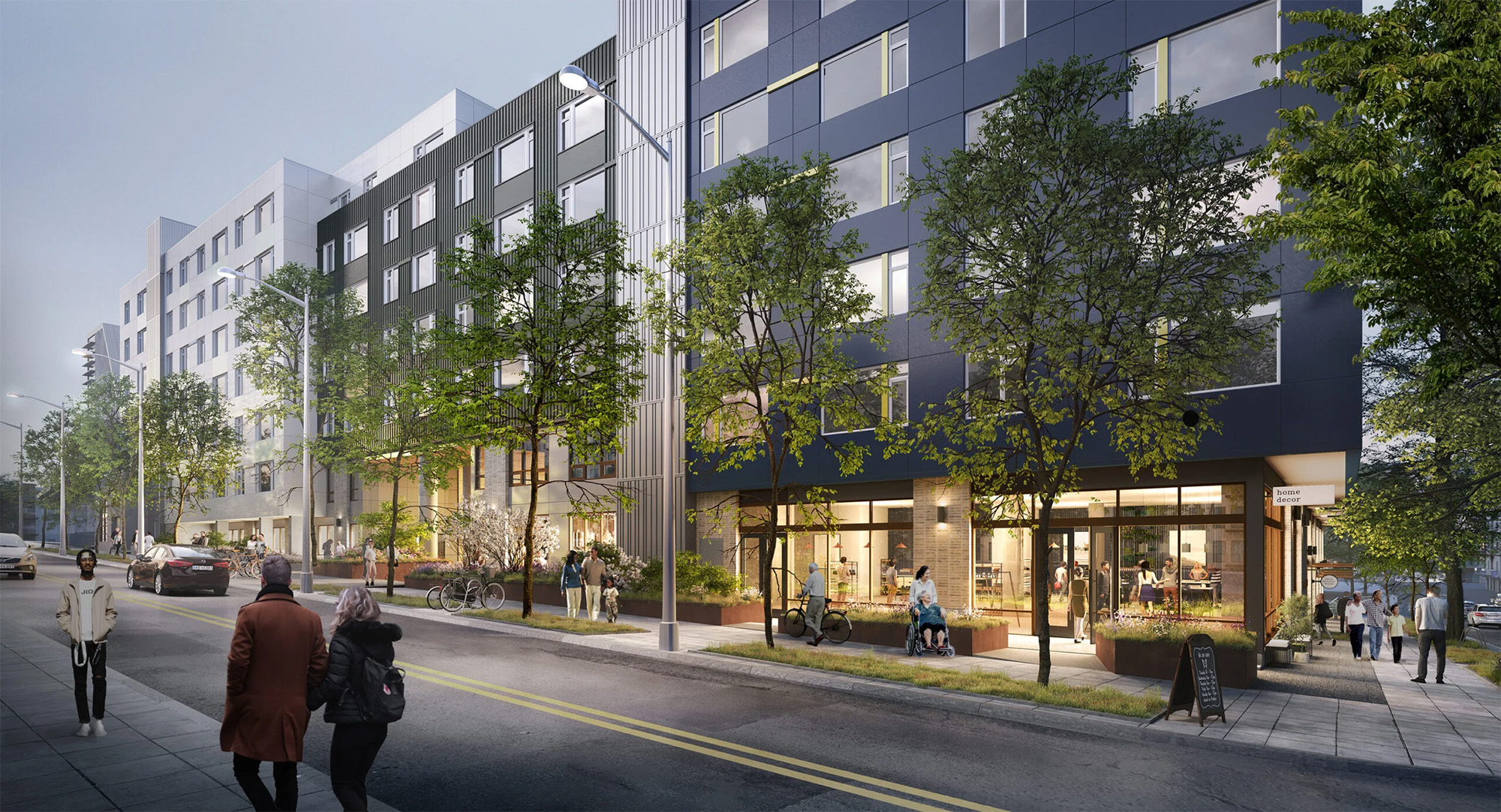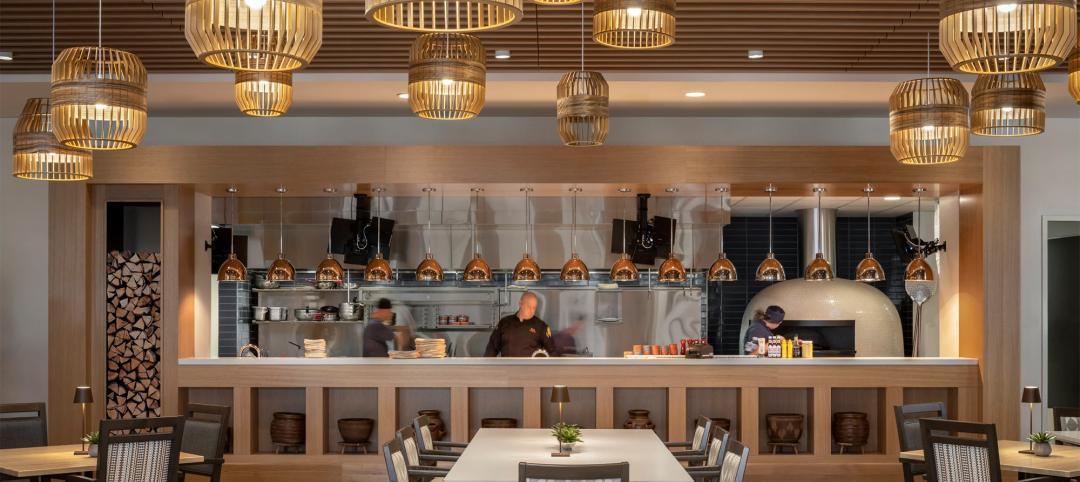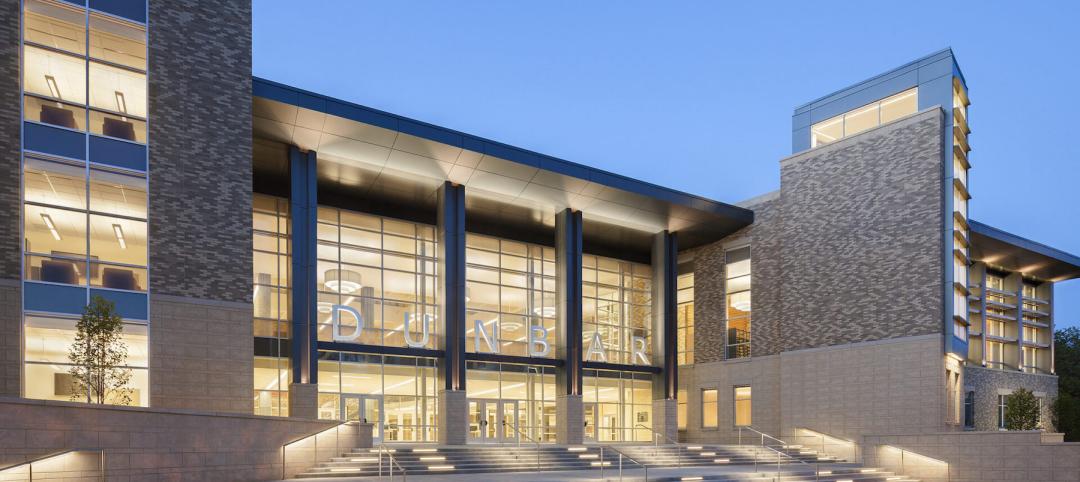A wave of residential projects rising across the country is meeting an insatiable demand, given the estimated shortage of 7.3 million homes that are accessible to low-income renters. Nationwide, 60% of all workers earn less than what’s required to afford a two-bedroom rental home, according to a June report by the National Low Income Housing Coalition, which also cited the shortage of affordable housing. In the same month, Private Equity Real Estate (PERE) reported that 85% of new rental housing being developed in the U.S. is priced in the luxury bracket, though just 15% of renters can afford it.
“What we’re trying to do as a practice is be the leaders and stewards for design principles and quality of life for affordable housing,” says Principal Steve Line of VIA—A Perkins Eastman studio, who works in Oakland, Calif. His team is writing guidelines for transit-oriented developments that incorporate affordable housing. “As designers, we can really help advance a conversation on what makes these places great to live in over the long term.”
These conversations take multiple forms depending on a region or city’s approach to boosting its affordable housing supply. Each time, it involves a different mix of government policy and investment with private development and equity.
Sustainable Senior Living
Construction is well under way in Yonkers, N.Y., where the state, along with Westchester County and the City of Yonkers, is providing a mix of bonds, subsidies, and grants to develop the 60-unit La Mora Senior Apartments for seniors who earn at or below 60% of the local area median income.
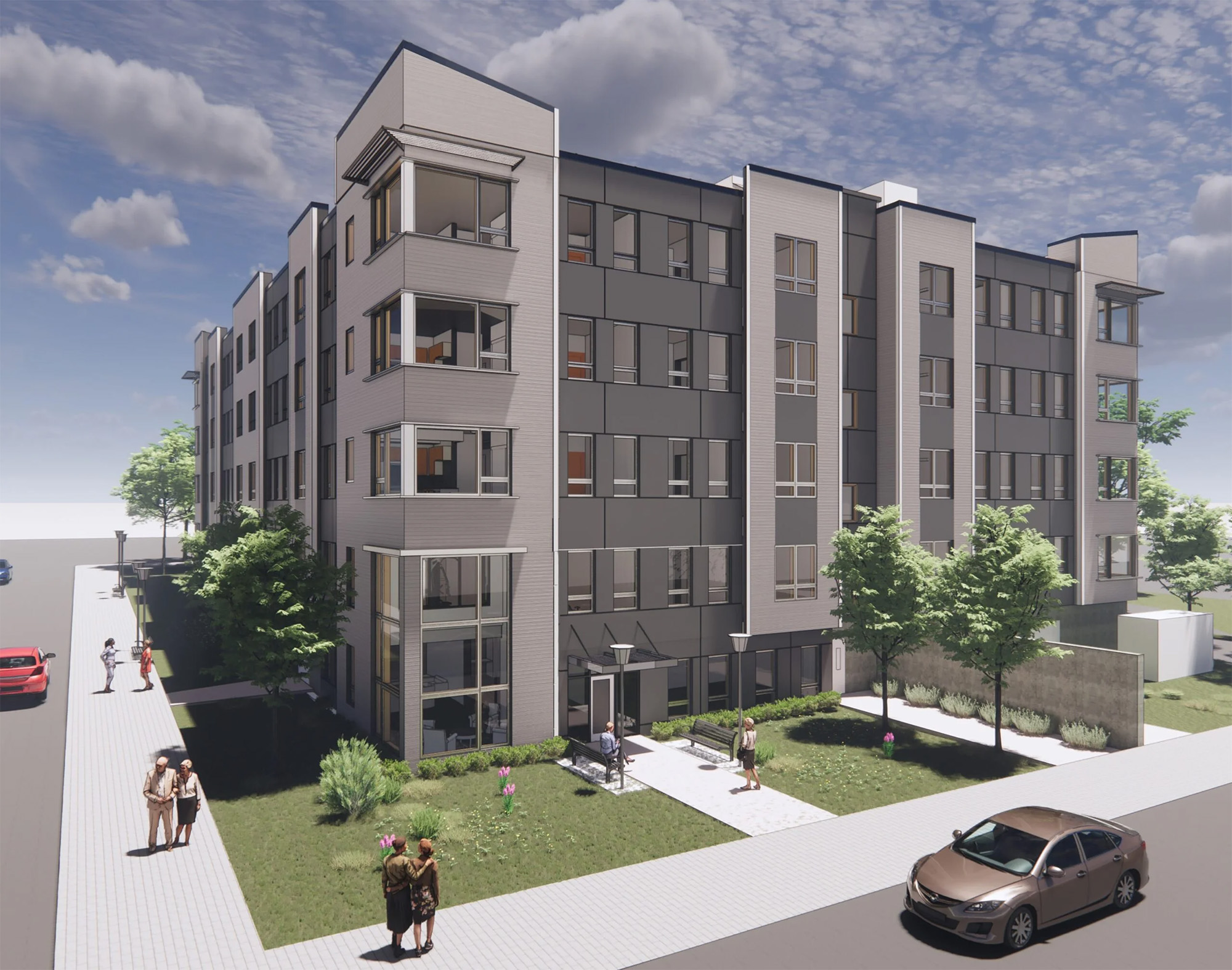
Perkins Eastman designed the modular building that also meets Passive House standards, meaning it’s highly insulated and air-tight so it needs smaller and less expensive mechanical equipment than other buildings of a similar size. A generator helps the systems stay operable during power outages. “As housing costs become more and more of an issue, the fact that people are aging on a fixed income makes it more problematic for them to age in place,” says Wilson Kimball, the president and CEO of the Municipal Housing Authority for the City of Yonkers (MHACY). “It’s very disorienting for people to move” if they are priced out of a neighborhood where they’ve lived for decades. “It’s so destabilizing,” she adds.
Projects such as La Mora not only allow seniors to age in place, but with increasingly extreme weather events that cause power outages, they can also stay at home without any interruption. “La Mora needed to be as efficient as possible, but balanced with the directive of MHACY that it needed to be nice, it needed to have a sense of dignity,” says Principal and Residential Practice Area Leader Stuart Lachs. “A lot of care went into the finishes and the colors and the materials that convey that this is quality housing and not ‘affordable housing.’”
The Evolution of Affordable Housing
For many, the notion of affordable housing conjures the days of high-rise public housing projects built in the mid-20th century, which were funded entirely by public housing authorities. Historically, public housing was built on the cheapest land, which generally was the most remote. “Out of sight, out of mind,” says Principal Eric Fang, who leads the firm’s PE Strategies group in New York. Fang leads a seminar on affordable housing at New York University with Principal Theodore Liebman, a veteran in the field.
Public housing “often gave anonymity and feelings of isolation to people living in those high-rises,” says Liebman, who was the chief of architecture for the New York State Urban Development Corporation (now Empire State Development) from 1969–1975. During that time, he went on Harvard’s yearlong Wheelwright fellowship to study and live in housing projects throughout Europe. He found the most successful ones had a sense of community that went beyond the buildings. That meant proximity to transit, jobs, schools, retail, public access to parks and recreation, and other social infrastructure.
Combining generations and income levels is also critical to a community’s long-term resiliency, adds Liebman, who carried out these ideas in the master plan for Arverne in the Rockaways in Queens. The plan featured low-rise, high-density housing and mid-rise apartments for seniors that blend affordable housing with all the social and economic elements needed to establish this successful and sustainable community.
Advancing the Knowledge
Fang has adopted many of Liebman’s principles in the master plan for Bayfront, a new mixed-income community on the Hackensack River in Jersey City, N.J.
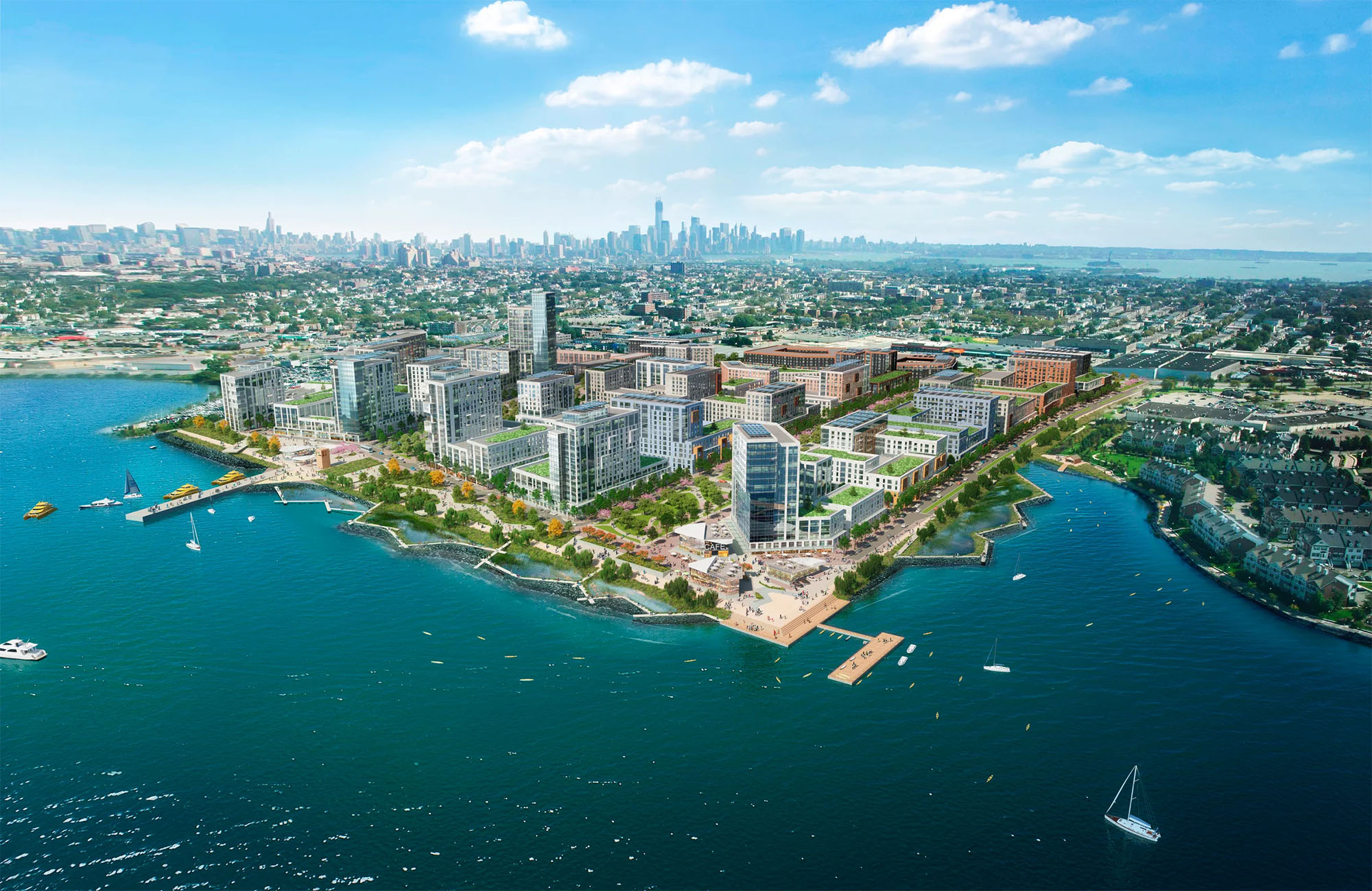
The master plan is designed to accommodate more than 8,000 units, 35% of which will be affordable to residents who make between 30 to 120% of the area’s median income. Jersey City has called it the largest-ever mixed-income development in the Tri-State area. It includes two new parks that provide public access to a new riverfront park. The park will feature a water-taxi landing that provides access to job centers in Newark and the west side of the Hackensack River.
Bayfront will also get a light-rail extension that will connect residents to downtown Jersey City and Manhattan. The community will be home to offices, schools, services such as daycare, and retail/dining. Both the buildings and the land itself will be sustainable and resilient to climate change.
Blending all these attributes is a response to the widely held notion of “ZIP-code-as-destiny,” meaning communities in ZIP codes with higher incomes produce better outcomes in life than lower-income areas. “We want to build good homes in good neighborhoods—that’s the name of the game,” Fang says. “To grow up in a healthy neighborhood that’s safe and has good schools—it doesn’t matter what income you’re at; you’ll have a better shot.”
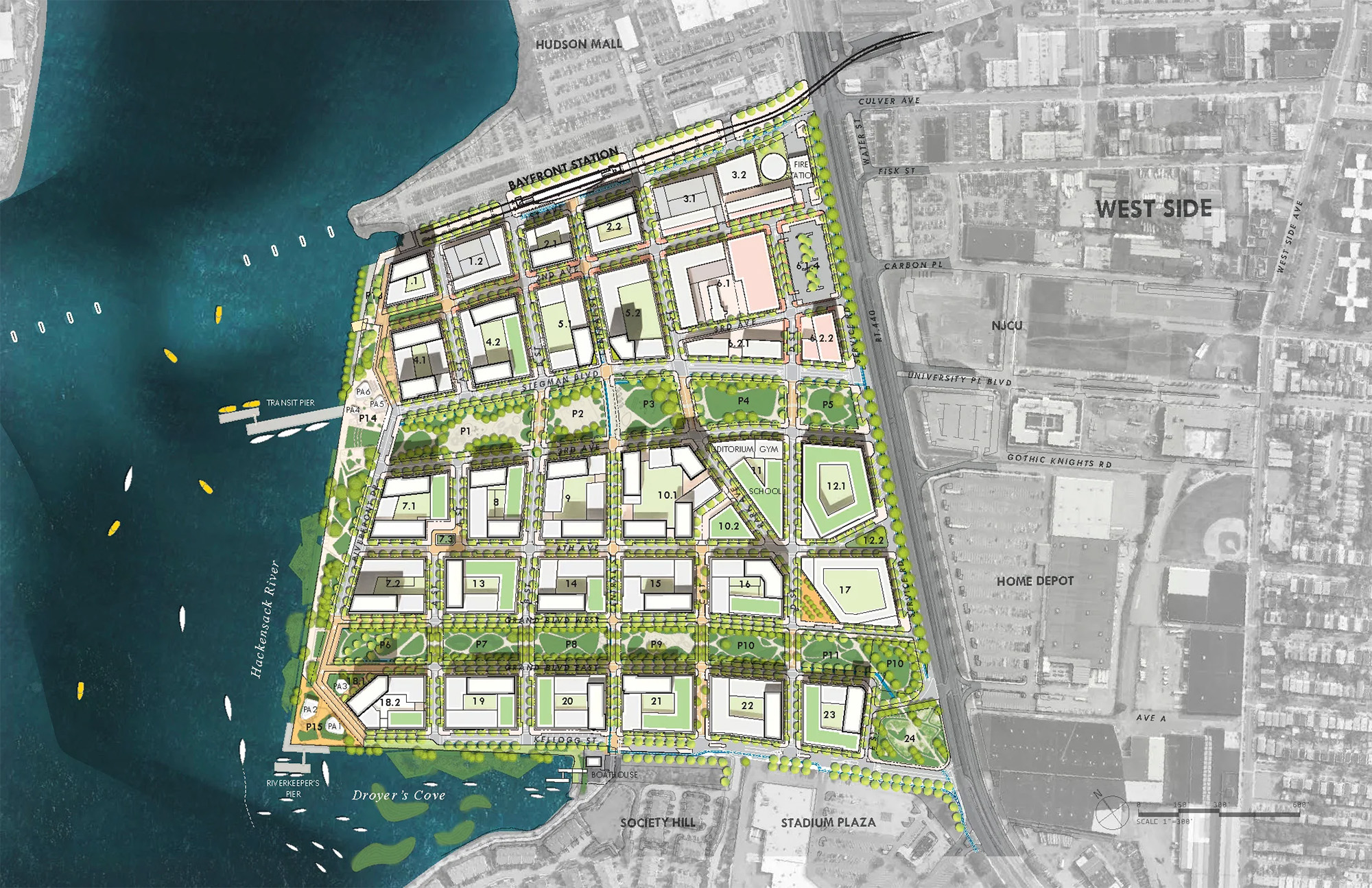
Developer Incentives
States and localities everywhere are adopting measures to address the housing crisis, which existed pre-pandemic and has worsened since, because construction slow-downs fueled by worker shortages and supply-chain interruptions have driven up prices. Washington, DC, offers an inclusionary zoning program that allows residential developers to build more units than would normally be permitted as long as eight to 10% of those units are affordable.
Inclusionary zoning is at work at the new 25-acre Reservoir District on the former McMillan sand filtration site where Perkins Eastman’s master plan is transforming the former industrial site into a mixed-use neighborhood anchored by a community center. The developers there are dedicating 134 units of affordable housing among 600 apartments and town homes. Some are designed for seniors earning at or below 30% of the area’s median income—a move, like La Mora in Yonkers, designed to help long-time neighborhood residents age in place—while others are designed for renters earning 60% of the area median income to attract people to DC who otherwise couldn’t afford to live there.
“The idea is to make real urban fabric, and that relates to the notion of real affordability,” says Associate Principal Christian Calleri, who oversees the project in DC with Principal Matthew Bell. Even better, Calleri says, residents don’t need a car to traverse the city or get to work. “Suburban patterns [that require cars] make more financial demands, more time demands, and more stress on everyone,” he says.
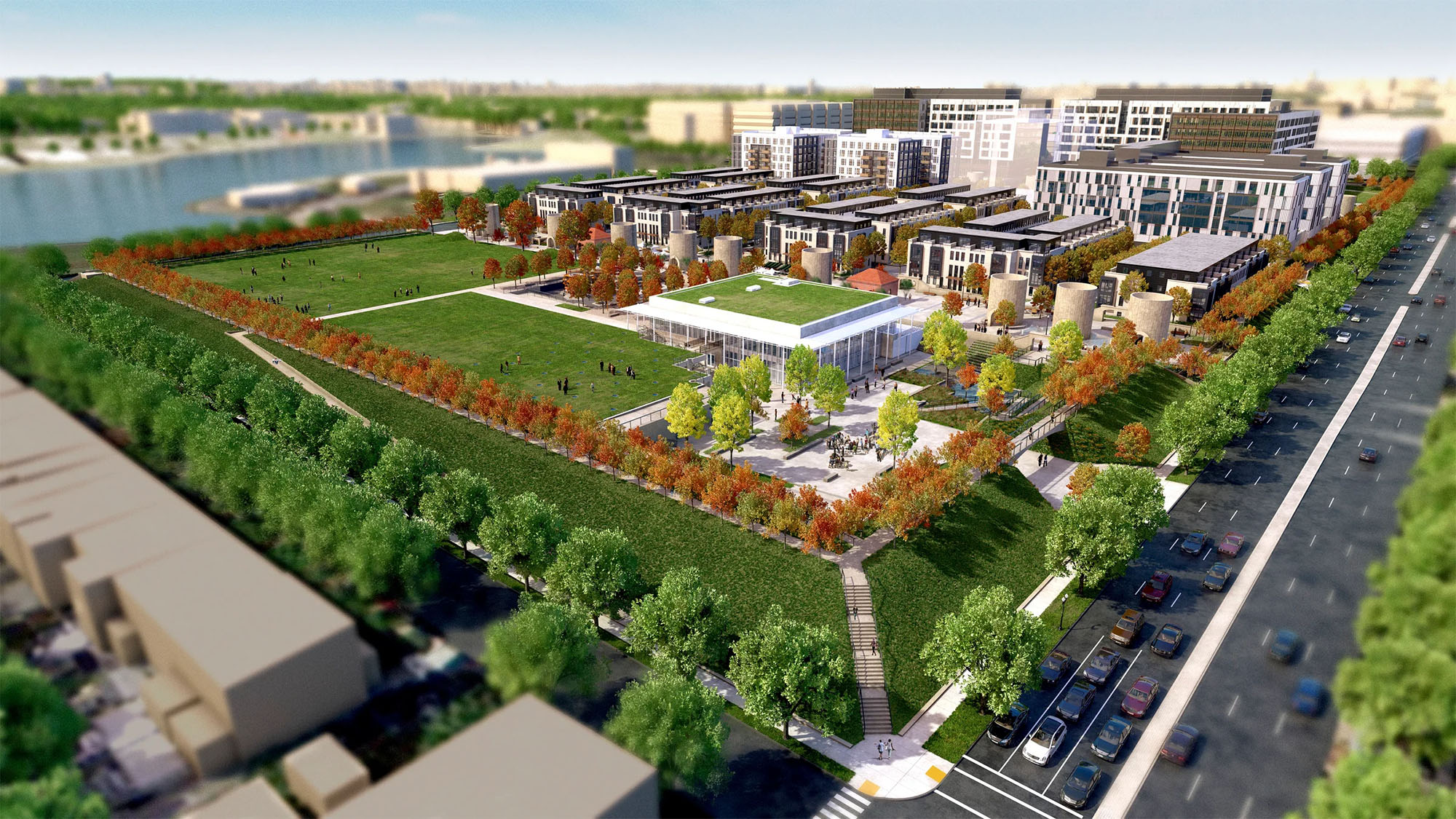
That’s the case in California, where Perkins Eastman is advising two school districts on the feasibility of converting district-owned property into housing developments for teachers and staff, so they don’t have to make long commutes from faraway suburbs. New state zoning laws permit a higher density on these properties than their surrounding areas, which are typically populated with single-family homes.
Similarly, VIA’s Steve Line is working on developer guidelines for Bay Area Rapid Transit (BART) that apply to housing on agency-owned property. The guidelines adopt BART’s recently updated policy that prioritizes affordable housing in transit-oriented developments. The policy offers discounts of up to 60% off fair-market value to purchase BART property in exchange for projects that include affordable housing. The more affordable units there are and the lower the income that qualifies for them is, the higher the discount.
“Mission Driven”
A successful example of this approach is in Seattle, Wash., where VIA designed Cedar Crossing, an affordable development of 254 units next to a light-rail station. Since the community’s opening in 2022, VIA has taken on four new affordable-housing projects elsewhere around the city, says Principal Jim Bodoia.
“They’re more mission-driven than a typical market-rate project,” he adds. “Hearing the testimony of people who have moved in and have more safety and security because of it is the reward—and we still hold our own in the design.”
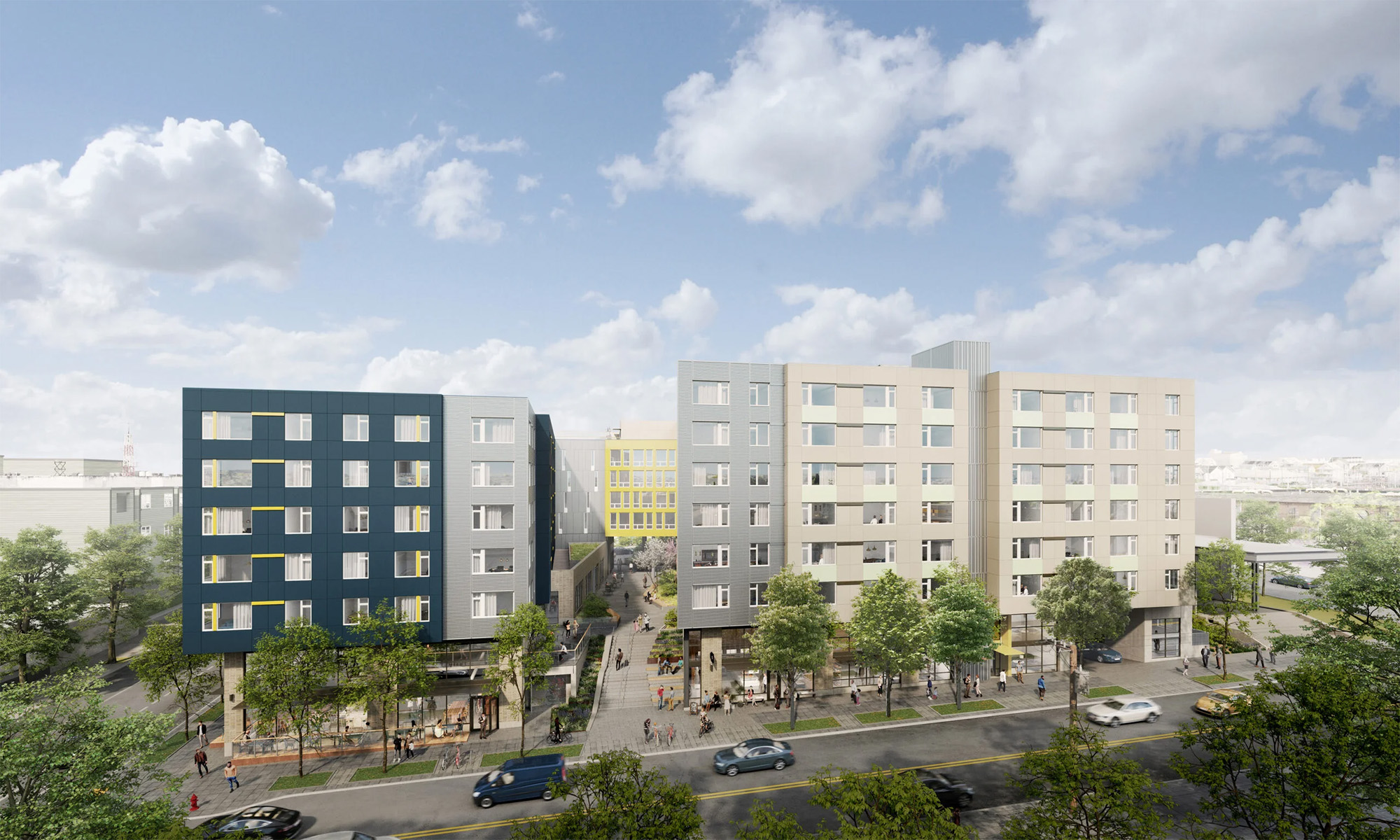
Lachs, Perkins Eastman’s Residential practice leader, acknowledges that affordable-housing projects don’t command the fees that market-rate and luxury projects do. But it’s an important part of the firm’s work, he says, because the work ties back to its Human by Design approach.
“I’ve been designing residential buildings my whole career,” he explains, “varying from high-end luxury residential to housing for people who were formerly homeless.” In either income category, Lachs says, “it’s the basics. You’re building shelter for people.” Whereas luxury projects come with luxury budgets, he adds, “there’s an enjoyable challenge of having to work within the confines of financial constraints, sustainability programs, and the requirements of public funding.”
And considering the urgency, Perkins Eastman is well equipped—with deep knowledge and resources—to continue assisting governments and developers as they contemplate how to provide more desperately needed affordable housing in their communities.
More from Author
Perkins Eastman | Jul 23, 2024
The growing importance of cultural representation in senior living communities
Perkins Eastman architect Mwanzaa Brown reflects on the ties between architecture, interior design, and the history and heritage of a senior living community’s population.
Perkins Eastman | Jun 24, 2024
Not your grandparents’ senior living community: Redefining aging in place
Perkins Eastman’s Senior Living and Residential teams are putting a new face on home for seniors who don’t want to move away in retirement.
Perkins Eastman | Sep 25, 2023
3 affordable housing projects that serve as social catalysts
Trish Donnally, Associate Principal, Perkins Eastman, shares insights from three transformative affordable housing projects.
Perkins Eastman | Jun 28, 2023
When office-to-residential conversion works
The cost and design challenges involved with office-to-residential conversions can be daunting; designers need to devise creative uses to fully utilize the space.
Perkins Eastman | May 25, 2023
From net zero to net positive in K-12 schools
Perkins Eastman’s pursuit of healthy, net positive schools goes beyond environmental health; it targets all who work, teach, and learn inside them.
Perkins Eastman | Apr 27, 2023
Blind Ambition: Insights from a blind architect on universal design
Blind architect Chris Downey shares his message to designers that universal design goes much further than simply meeting a code to make everything accessible.
Perkins Eastman | Jan 27, 2023
Enhancing our M.O.O.D. through augmented reality therapy rooms
Perkins Eastman’s M.O.O.D. Space aims to make mental healthcare more accessible—and mental health more achievable.
Perkins Eastman | Sep 21, 2022
Architecture that invites everyone to dance
If “diversity” is being invited to the party in education facilities, “inclusivity” is being asked to dance, writes Emily Pierson-Brown, People Culture Manager with Perkins Eastman.
Perkins Eastman | Aug 29, 2022
What does school safety mean?
The familiar headlines followed close after nineteen children and two teachers died in a mass shooting at Robb Elementary School in Uvalde, TX, on May 24, many of them blaming school infrastructure for the gunman’s ability to attack.


